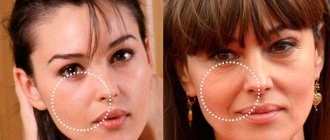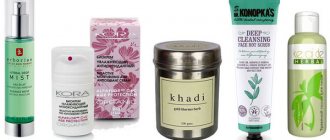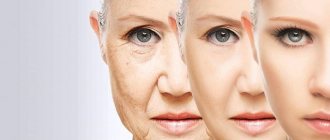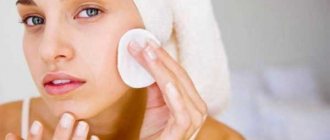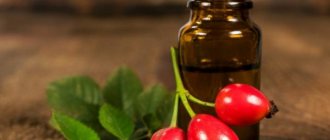Treatment
A certain therapy is prescribed by a doctor after diagnosing the disease. It may include medications and a number of care products, including traditional recipes. It can be especially difficult to get rid of fungal infections, but after identifying its type, this is quite possible with the correct selection of ointment.
Medication
The prescription of drugs is determined by the reason why the skin is peeling. In case of fungal infection, treatment is carried out using such means as:
- Nizoral,
- Ketoconazole,
- Exoderil,
- Fluconazole,
- Lamisil,
- Diflucan.
Therapy may not be very quick and may take a long time, up to several months. If the cause is an allergen, then you need to limit contact with it. To enhance the effect, it is necessary to take antihistamines, for example, Suprastin or Zyrtec. In addition to them, sorbents are often used that remove toxins from the body. When treating more severe diseases, such as eczema or psoriasis, the doctor himself determines the therapy. It includes:
- corticosteroid drugs – Advantan, Lokoid,
- anti-inflammatory medications - Elokom, Bepanten, Fenistil.
- Bepanten,
- Panthenol,
- Radevit,
- Neutrogenia.
Folk remedies
Traditional medicine recipes are also effective in combating peeling hands. Although it is better to use them as an adjuvant to the main therapy against a specific disease prescribed by a doctor. If the skin peeling is not caused by serious pathologies, then you can use the following folk recipes:
- Celandine ointment. To prepare it, add 1 cup of vegetable oil to the leaves of the plant. Then you need to boil this mixture, add 20 g of wax to it and keep it on the fire until it is completely dissolved. Apply the resulting composition to the damaged areas 2 times a day.
- Gelatin. Baths are made from this product. To do this, pour 1 teaspoon of gelatin into 1 glass of water. The mixture is boiled for 40 minutes, then allowed to stand for a while. You need to place your hands in the warm mass and hold it until it cools.
- Honey with oatmeal. A mask is made based on them. To do this, take 1 tablespoon of each ingredient, mix and leave for a couple of minutes. Leave this mask on the skin of your hands for about half an hour, then wash it off with warm water and lubricate the skin with a rich cream.
Cosmetics
Proper regular care is very important for hand health. Cosmetics in the form of creams, ointments, lotions and other types help to carry it out. Preparations with the following components will be effective for the health and beauty of the skin:
- hyaluronic acid,
- linoleic and linolenic acids,
- hexahydric alcohol sorbitol,
- collagen,
- glycerin.
These components help provide hydration to the epidermis, stimulate cell renewal, increase protective qualities and add elasticity. Moisturizers based on olive oil, jojoba oil, grape seed and apricot are also very useful. Any fatty ointment with these components has a positive effect.
Spring vitamin deficiency is identified as a separate disease. For treatment, a course of vitamin complexes and the consumption of fresh vegetables, fruits and dairy products are prescribed. Allergy treatment is carried out with Bepanten, Elocom, Fenistil, the course is supplemented with folk remedies and avoidance of foods such as chocolate, honey, carbonated drinks and others.
When treating contact dermatitis, you should remove all aggressive chemicals, use moisturizers, emollients, ointments and creams, use antibiotics and antiviral medications. Dermatitis and eczema are treated with anti-inflammatory and antiallergic drugs. It is necessary to find out the cause of the exacerbation and follow a diet during such periods.
For mycosis, in addition to pharmaceutical medications, treatment with folk remedies is used in the form of infusions, decoctions, herbal baths (celandine, lavender extract, chamomile), various oils (almond, flaxseed, sage oil). A potato mask moisturizes well and makes your hands soft and tender (raw grated potatoes are applied to the damaged areas, a glove is put on your hand for two hours).
Hand masks are prepared from fermented milk products (sour cream or kefir is applied to the dry surfaces of the palms and covered with a napkin). It is good to wipe the outer side of the brush dehydrated in the sun with cucumber juice. Use an oatmeal scrub to remove the stratum corneum.
Why does the skin on the palms of the hands peel?
Hands are one of those parts of the body that are more susceptible to negative external factors than others. It is natural for the skin to renew on them within a month, when the upper layer of the epidermis is replaced almost imperceptibly. If this becomes obvious, then there is definitely a problem in the body.
Symptoms
Skin peeling is manifested by several simple signs - it bursts or cracks, after which pieces of the epidermis appear on the surface, which peel off on their own or can be torn off. Such symptoms affect the fingers as a whole, the surface between them and their pads, the palm itself and its back side.
- peeling;
- burning and itching;
- redness;
- rash;
- pain.
There are many reasons why palms and fingers peel and peel. It all depends on the individual, his skin and occupation. One of the main ones is an allergy to:
- cold;
- caring cosmetics – creams, ointments, soaps, etc.;
- food consumed;
- medicines;
- dishwashing detergent, especially if used frequently without gloves.
Another reason that the skin peels is the lack of proper hand care, including insufficiently deep moisturizing. This is especially true for those who have naturally dry skin. From a lack of vitamins, peeling of the epidermis is also often observed. With a deficiency of microelements, the elasticity of the skin decreases, which can cause cracks.
- prolonged exposure to the sun;
- dry air during the heating season or hot period of the year;
- the habit of constantly scratching your palms, which causes infection in the tissues;
- contacts with cement, dust, earth and other construction work.
A separate reason for peeling skin is a fungus. In this case, the manifestation of symptoms along the edges of the palms is especially characteristic. If the skin on the palms and other parts of the hands peels off, this may indicate some other diseases, such as:
- eczema;
- dermatitis;
- psoriasis;
- lichen planus;
- scabies (the skin peels off on the palms and between the fingers).
In this case, not only does the skin peel off, but also itching, redness and a rash appear. Changing cosmetics will not help here. Treatment is carried out after tests and can only be prescribed by a doctor. In addition to skin pathologies, the reason that the skin peels off is also diseases of the internal organs, parasitic, infectious, etc.:
- lupus erythematosus;
- parakeratosis, hyperkeratosis;
- syphilis;
- staphylococcal infections;
- scarlet fever (fingertips peel off);
- helminthic infestation;
- dehydration (skin peels off, hair becomes dry);
- stress and neurological disorders;
- pathological processes in the pancreas;
- hormonal imbalance;
- reduced immunity.
The reasons why the skin peels off on the palm of one hand are the same as in the case of both hands. Although more often this phenomenon is observed in the event of contact with this hand of some kind of irritant. This is how an allergic reaction to detergent, cosmetics, food, sun or dry air manifests itself. Skin diseases can also be the cause of peeling palms.
The skin is bursting
A more serious problem is skin popping. It may be more painful. Among the external reasons for this phenomenon are:
- exposure to frost;
- aggressive household chemicals;
- unsuitable cosmetics;
- contact with solvents, paints and other compounds used during repairs.
There are a number of diseases that lead to the skin on the palms or arms in general bursting and peeling off:
- eczema;
- avitaminosis;
- fungal infections;
- psoriasis;
- dermatosis;
- metabolic disease;
- hormonal imbalances;
- heredity;
- taking antibiotics;
- inflammation in the body.
Causes
The reasons why the palms of the hands become dry are the impact of external aggressive factors on them or the presence of certain health problems.
Use of household chemicals and other external factors
The skin on the palms may crack and peel for the following reasons:
- Using aggressive detergents from the household chemicals category without protective gloves. This is due to their irritating effect on the skin.
- Frequent use of antibacterial gels and hand creams. They destroy the protective layer of the epidermis, which leads to increased dryness.
- Contact of palms with construction mixtures, solutions, dust generated during repairs. From such an impact it can crack. Quite often a severe allergic reaction develops with the appearance of rashes and inflamed areas.
- The use of low-quality care cosmetics - creams, lotions, gels.
- Exposure of the skin to high or low temperatures, wind, sun.
Internal reasons
Peeling on the surface of the palms is often observed in people with dry skin after contact with water or other external irritants.
The appearance of this problem in children and adults can also be caused by certain pathological conditions of the body:
- Skin infection due to fungal infection.
- Poor nutrition, which leads to a deficiency of vital vitamins and minerals.
- Development of dermatological diseases. Dry skin can be caused by psoriasis, eczema, dermatitis, and scabies.
- The presence of serious systemic diseases - diabetes mellitus, thyroid dysfunction.
- Hormonal changes in the human body. Often problems with the epidermis occur during pregnancy or menopause.
Skin peeling may occur after antibiotic treatment.
What to do
A dermatologist can correctly diagnose the reason why the skin of your hands is peeling, so if you have such a symptom, it is better to immediately contact a dermatologist. Until this point, you can try to improve the condition or at least alleviate it. The first thing you need to do is start taking care of your skin. After washing, they need to be dried thoroughly. Twice a day, the skin should be lubricated with a nourishing cream containing chamomile, glycerin or aloe. The following will help improve your condition:
- Baths. A very effective recipe is 1 tablespoon per 1 liter of water. Leave your hands in this composition for about a quarter of an hour, after which they are blotted with a napkin and lubricated with cream.
- Masks. Honey ones are especially useful. Honey should simply be applied to the skin. After half an hour, it is washed thoroughly.
- Lotion. Rub your hands with a piece of cucumber, then lubricate them with a mixture of glycerin cream and lemon juice.
Causes of dark spots on hands
Most often, dark spots can appear due to solar activity. In summer, the sun is most active, which leads to the formation of a large amount of melanin pigment, which is responsible for skin color. So the hands may become covered with freckles, nevi or other types of age spots. In winter, the skin lacks melanin, which leads to the formation of spots of the opposite color. Pigment spots on the skin of the hands can appear with age due to constant mechanical, chemical and climatic influences on the skin.
Black spots on the skin of the hands may also appear due to housework. After peeling and cutting some fresh fruits or vegetables, the skin begins to darken. Such spots are localized mainly around the nail plates and on the palms of the hands. It may look like it's just dirt, but such stains cannot be washed off with plain water. In this case, oddly enough, lemon juice or citric acid will help you out. But this method can damage delicate skin, so it’s better to take care of your hands in advance.
Prevention
To prevent peeling on your fingers, you should follow simple hygiene rules.
- Use gentle detergents containing natural ingredients and vegetable oils. Do not constantly use antibacterial soap as it dries out the skin.
- Reduce hand contact with cold water and aggressive chemicals. Perform work wearing rubber gloves. Lubricate your hands with cream or other product after cleaning, washing dishes, etc.
- Wear gloves in the cold season and prevent your hands from becoming chapped and freezing.
- Use a terry towel after washing your hands.
- Use sun protection creams in summer.
- Massage your fingers using medicinal ointments, masks or creams.
- Exfoliate keratinized areas with a scrub.
- Make hand baths with decoctions of various plants (celandine, string, oak bark, etc.).
Peeling skin on the fingers can be caused by a variety of reasons. Most often this happens due to a lack of moisture in the epidermis, contact with chemicals, and exposure to adverse weather conditions. The use of ointments, cosmetics and folk remedies, as well as vitamins will help solve this problem.
If peeling skin is a consequence of an illness, then you should not self-medicate under any circumstances; you should consult a dermatologist.
Treatment at home
If the skin on your hands becomes dry and cracked, treatment should begin as early as possible. When exposed to external factors, therapy will consist of eliminating the provoking factor itself. You need to start with the following steps:
Work with chemicals, detergents and do housework using gloves, rubber or cotton.- Do not use too cold or hot water to wash your hands.
- Wash your hands only with special mild soap without aggressive components.
- Apply nourishing or moisturizing creams to the skin of your hands several times a day to prevent drying out.
- Choose skin care products only from proven and reliable cosmetic companies.
- Do not go out into the cold without gloves or mittens.
- When going outside in sunny weather, protect your skin with special products.
- Use indoor humidifiers.
- Introduce as many fruits and vegetables into your diet as possible to ensure you have enough vitamins and minerals.
Preventive measures: what should be done?
Regular preventive measures can help prevent skin problems. It consists of good hand care, which includes:
- Dry your hands thoroughly after washing,
- refusal of antibacterial soap in favor of a soft gel for sensitive hand skin,
- drink up to 2 liters of fluid daily to prevent dehydration,
- in summer, use sunscreen,
- in cold weather, always wear mittens or gloves,
- maintain proper nutrition so that the diet is rich in vitamins,
- use rubber gloves when doing housework,
- use hypoallergenic cosmetics,
- Lubricate your skin with moisturizing creams daily.
Remember! Hands, our main helpers, need constant care, perhaps even more than the face and other parts of the body.
Hands should be protected from temperature changes. In cold weather, be sure to wear warm gloves or mittens, avoid contact with the ground and cement during construction work, and if necessary, wear protective gloves. Dishwashing detergents should be gentle, do not forget rubber gloves (if you are not allergic to them!).
Severely irritate the skin of the hands and feet, mechanical injuries lead to cracks, as well as burns and hypothermia. If dryness on the inside of your palms appears as a result of dehydration, you should increase the amount of water you drink to cope with it.
Conclusion
If the epidermis is damaged due to endocrine disorders or other internal disorders of the body, these conditions must be stabilized by taking medications prescribed by a specialist. Often the skin on the hands peels off due to exacerbation of parasitic diseases.
In conclusion, I would like to note that peeling of the skin of the hands, as well as between the fingers, can be quite easily cured if it is not caused by fungal diseases or other pathologies of the body. You need to lead a healthy lifestyle, eat foods rich in vitamins, and use rubber gloves when coming into contact with chemicals.
To prevent peeling of the epidermis of the palms, preventive measures should be followed, which include:
- Maintaining proper diet.
- Regular intake of vitamin and mineral complex preparations.
- Periodic use of warm baths for the palms. Aqueous solutions of decoctions of medicinal herbs give very good results.
- Regular application of moisturizing and nourishing masks and compresses to the skin.
- Periodic use of paraffin hand masks.
- Washing dishes, cleaning and laundry using modern detergents and wearing protective equipment such as gloves.
The skin on the palms peels off quite often, but this does not mean that one can turn a blind eye to such a pathological phenomenon. In any case, when peeling epidermis appears, it is necessary to consult a dermatologist, who will not only determine the cause of its appearance, but also recommend treatment methods.
Treatment with creams and ointments
Treatment of insufficient hydration in the upper layer of the skin should be carried out after determining the cause. When poor hand care is performed, use nourishing cream, scrub and mask daily.
If dry hands are the cause of a skin disease, you should first visit a dermatologist and treat the disease.
Dry skin on the fingers can be eliminated using the following creams:
- Hydra active-cream combined action is an effective remedy for sensitive hand skin, improves the condition of nails. Protects dry skin between the fingers from the harmful effects of chemicals.
- Velor cream – enhanced hydration and protection of hands, eliminates minor scratches and cracks. Includes chamomile extract, glycerin and vitamin F. Dry skin of the fingers is moisturized and takes on a well-groomed appearance.
- Salon spa cream moisturizes and soothes; it contains seaweed, fucus and silk. Dry fingertips become soft, the skin does not peel and becomes smooth.
- Doctor Sante Cream “Soft Silk, Nourishing” nourishes skin prone to flaking and redness. It is a combination of bright moisturizers and natural waxes.
- Cream “Home recipes – softening”. Contains peach oil and royal jelly. Stops inflammatory processes, preserves youth and attractiveness of hands, retains moisture in the epidermis.
- Cream "Bio cream-moisturizing" penetrates well into the deep layers of the skin. Includes botanical extract of Angelica and Lungwort plants.
The use of household chemicals, improper care, the external environment - all these nuances lead to changes in the condition of the skin. Irritation resembling an allergy may appear on the hands, dryness, peeling, and cracking may occur. These factors are not health deviations. Cracks in the fingers are considered a serious cause for concern, the causes and treatment of which are not related to weather conditions, household responsibilities or age-related changes. Wounds with blood should be a mandatory reason to see a doctor.
Causes of peeling fingertips. Why does the skin on my fingers peel?
Hands perform many functions, which puts enormous stress on the skin on the fingers. The skin on your hands is daily exposed to aggressive chemicals, severe temperature changes, various weather conditions and other harmful environmental factors.
The situation is aggravated if a person suffers from increased dryness or sensitivity of the skin, which reacts sharply to even the slightest irritants. The most severe damage to this type of skin occurs with insufficient or improper care, for example, with the use of inappropriate cosmetics.
In addition, the skin on the fingers is especially susceptible to infection by various pathogenic bacteria and parasitic fungi. At the first stages of development, these diseases may not cause serious concern in the patient, but over time they can lead to dangerous consequences, including tissue necrosis.
The main factors that cause peeling of the skin on the fingers:
- Fungal infection. With this disease, the skin not only peels off greatly, but also turns red, cracks, and becomes covered with whitish grooves and blisters. The disease is accompanied by itching, burning and discharge of ichor from damaged areas of the skin. Often the nail plates are affected near the skin;
- Non-infectious skin diseases. Peeling of the skin on the fingers is quite often caused by various skin diseases that are non-infectious in nature. These include eczema, psoriasis and neurodermatitis, which are usually chronic in nature with regular relapses;
- Allergic reaction. In many cases, peeling skin on the hands is a consequence of contact or food allergies, which manifests itself in the form of atopic or allergic dermatitis;
- Exposure to chemicals. Modern household chemicals contain potent components that help easily remove even heavy dirt, but have a harmful effect on the skin of the hands. Therefore, peeling on the fingers often appears after hand washing, washing dishes, cleaning the bathtub and toilet;
- Hypovitaminosis. Due to a lack of vitamins, the skin becomes dry, wrinkled, loses firmness and elasticity. Small painful cracks and peeling appear on it. The greatest danger to the health of the skin of the hands is a lack of antioxidant vitamins - A, C and E, as well as B vitamins;
- Exposure to sunlight. In hot sunny weather, the skin loses a lot of moisture, causing it to become dry and irritated. In addition, under the influence of ultraviolet radiation, damage to the upper layer of the epidermis occurs, which is why the skin begins to peel and peel;
- The influence of cold temperatures. In the cold, blood supply to the extremities deteriorates, which disrupts the supply of nutrients and oxygen to the fingers. This affects the health of the skin, making it pale, dry, thin and flaky;
- Professional activity. If, due to a person’s occupation, he often comes into contact with water, soil, sand and other environments unfavorable for the skin, this can negatively affect its condition and cause peeling;
- Incorrect care. For the beauty of your hand skin, you need not only hydration, but also nutrition, which creams with a thick, oily consistency can provide. Regular use of light melting liquids can lead to severe dryness and peeling of the fingers.
How to deal with dark spots and redness on the skin of your hands
If dryness and loss of vitamins are felt on the skin of your hands only by you, then dark pigment spots and redness are visible to everyone. In addition, a crust may appear on the skin of the hands. Of course, I want to fix everything as soon as possible so that inflammation does not develop on my fingers. And there are several secrets here:
- Whitening hand mask. Mix a small amount of mashed potatoes with sour milk or milk. The mask should be kept for 15-20 minutes, then rinsed with water and applied nourishing cream to your hands.
- Softening and whitening paste. To prepare it, you need to add a little wheat flour and lemon juice or a weak vinegar solution to freshly boiled potatoes. This paste must be applied for 10-15 minutes.
- Remedy for severe redness on hands. Contrasting baths help best with red hands. First you need to make a hot bath with the addition of one teaspoon of mustard powder. Then you need to put your hands in cold water. You need to make at least three such transitions from a hot to a cold bath. After the procedure, dry your hands and apply vitamin cream to them.
- For peeling hands, a mixture of lemon juice and egg yolk helps a lot. The mask will be more effective if you add flaxseed oil and honey to it. Oatmeal will be an excellent helper for dry and flaky skin. Just boil it in water and add a little vegetable oil. This mask can also be applied to the face.
- The most effective remedy for removing dark spots and dirt is lemon juice with the addition of table salt. Rub your skin thoroughly with this mixture, then rinse your hands with water. If there are wounds or cracks on the skin, then using this recipe is not recommended.
- You can make the cream at home. To do this, dissolve a little gelatin in water, add glycerin and honey. The cream should be rubbed into damp skin of your hands every day before going to bed.
Along with external methods, you should not forget about taking vitamins internally. So, you can eliminate spots and prevent skin aging through two channels at once - outside and inside. It is better to use multivitamin complexes, ascorbic and nicotinic acid for these purposes. It is necessary to apply any of the described methods every day until the problem that bothers you is immediately eliminated. Then it is enough to repeat the procedures once a week for preventive purposes. If none of the methods helps, then it is best to consult a dermatologist. He will prescribe the necessary course of medication or cosmetic treatment, peelings or cryotherapy.
Etiology
The skin on the hands often dries and cracks under the influence of non-pathogenic factors, including:
- vitamin deficiency (dryness, skin peeling off fingers, bruises);
- weather conditions (chapping of the skin in cold weather is fraught with drying out of the sensitive epidermis, the appearance of peeling and deep cracks);
- improper skin care (washing hands too often, using low-quality care and cleansing cosmetics, as well as daily cleaning, washing dishes, washing clothes by hand without special gloves and using aggressive household chemicals leads to the abrasion of the protective layer of the epidermis).
In addition to the fact that under the influence of these factors the skin loses its healthy and well-groomed appearance, due to the thinning of its natural protective barrier, the gates open for all kinds of pathogenic microorganisms. The risk of infectious, fungal or viral infection increases several times.
Also, the skin on the hands cracks until it bleeds, drying out and becoming irritated due to the development of such pathological conditions of the body:
- Mycosis. People of different ages, gender and nationality are susceptible to fungal infections of the skin of the hands by dermatophytes and candida. The source of the disease in most cases is infected skin of the feet, from the surface of which spores of the pathogenic fungus spread throughout the human body. Characteristic manifestations of mycosis on the hands are dryness, irritation and peeling of the skin between the fingers, a burning sensation and itching in the damaged areas. With candidiasis, these symptoms are accompanied by a whitish coating with a sour odor, weeping, the formation of yellowish or white spots on the nail plates and a change in their shape, caused by the penetration of fungal spores into the thickness of the nail.
- Dermatitis. Drying and cracking of the skin on your hands can be caused by allergic or contact dermatitis. For the first type of disease, which develops immediately after direct contact of the skin with an allergen, the characteristic symptoms are the accompanying inflammatory process, hyperemia and swelling of the affected area. Allergic dermatitis can develop without direct contact of the skin and the irritant; its indirect exposure (oral intake of certain groups of medications, food, etc.) is sufficient. This type of disease is manifested by redness, swelling and itching of the skin, the formation of small water bubbles with liquid on the fingers. In advanced cases, the skin on the palms may peel off.
- Eczema. Severe itching, hyperkeratosis, dryness and flaking, swelling and weeping of the skin usually react to the development of eczema. In most cases, the symptoms of the disease in chronic form manifest themselves in the form of a rash on the palms and fingertips. During the period of exacerbation of the pathology, large cracks may form on the skin of the palms, in the folds between the fingers, thickening and excessive pigmentation of the affected skin, provoked by constant scratching of itchy foci of eczema.
- Exfoliative keratolysis. In women and men at a young age, exfoliative keratolysis often occurs, in which the skin on the hands becomes very dry and flaky, especially in the hot summer season. A predisposing factor to the development of the disease is the use of soaps, solvents or detergents with aggressive components in the composition. The first symptoms of the disease are small air-filled blisters that are localized on the fingers or the surface of the palms. Noticeable itching may occur only in rare cases. In the pathogenesis of exfoliative keratolysis, there is a strong tendency towards relapses occurring as soon as possible after remission. This process is usually accompanied by the formation of large cracks in the interdigital folds and on the palms.
- Cold urticaria. The skin of the hands is often exposed to aggressive external factors (frost, cold wind and water, dampness, etc.). Against the background of such cold irritation, an allergic reaction develops, the characteristic manifestations of which are red spots, swelling, the formation of blisters, dryness and peeling of the skin exposed to low temperatures. Allergy symptoms make themselves felt in the near future (usually within the first 10-20 minutes) after contact with external irritants.
It also cannot be ruled out that drying and cracking of the skin on the hands may act as a dermatological manifestation of diabetes mellitus. Patients experience dry skin, local hyperkeratosis on the palms, and wrinkling of the fingertips.
Preventive actions
Simple tips from dermatologists and cosmetologists will help you maintain youthful hands, their elasticity and beauty:
- Wear gloves in cold temperatures. Already at 8 degrees Celsius it is worth thinking about protection from the cold. Moisturizing is the surest way to preserve your skin.
- In summer, use sunscreen. The afternoon sun is harmful to the whole body.
- Dryness requires hydration even after contact with water.
- Wear gloves when cleaning.
- Make masks and hand baths.
- A hand massage will help normalize blood circulation and avoid wrinkles. Skin and nails will become healthier.
- Review your diet. It is important to eat a balanced diet. Include foods that have beneficial substances for nails and skin.
- To prevent wrinkles, take vitamins A and E.
